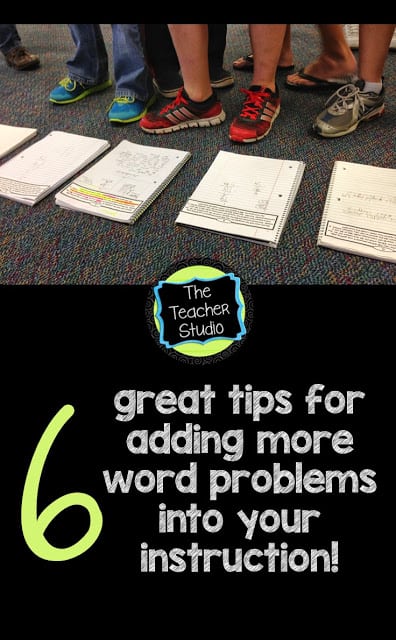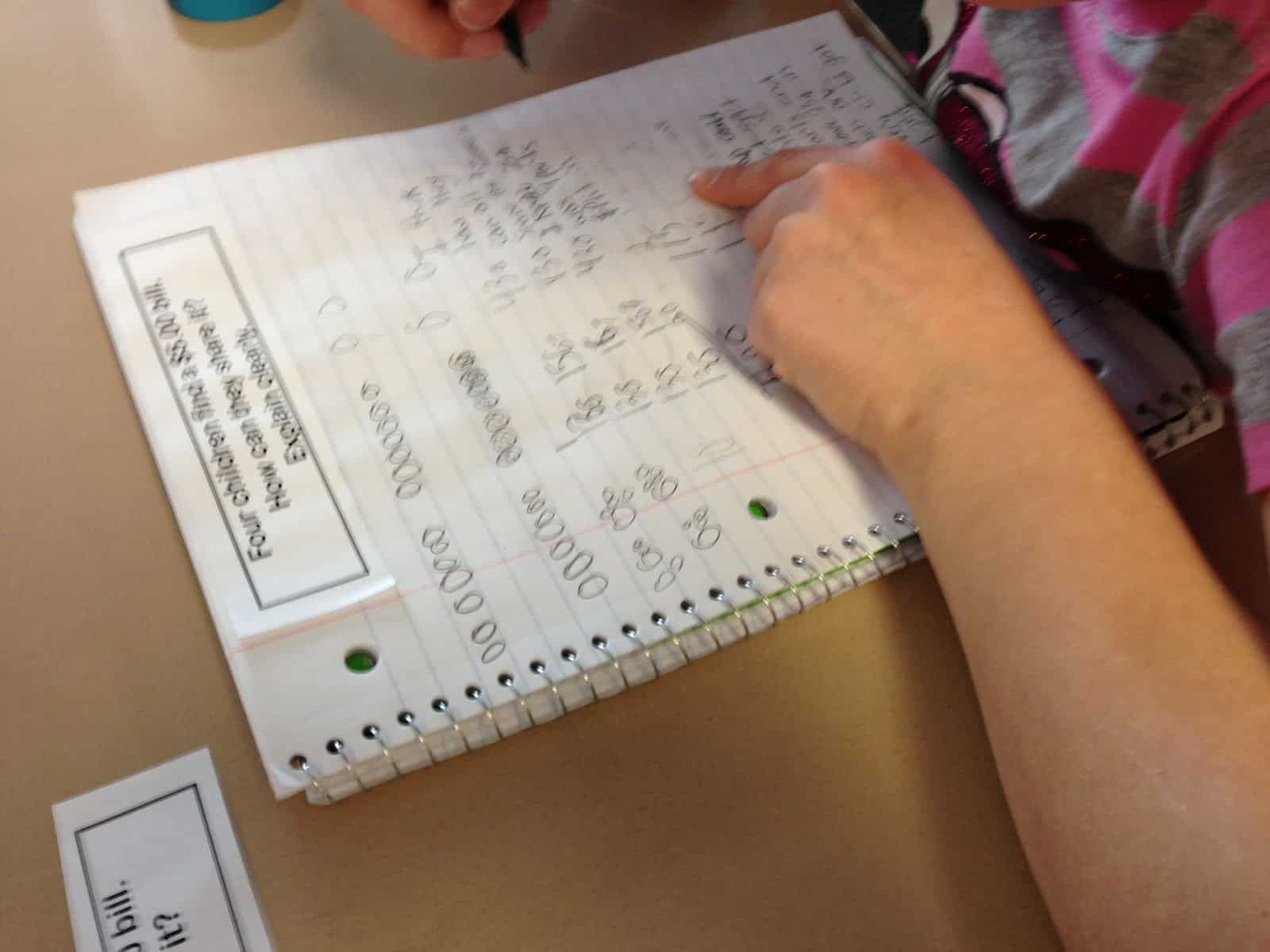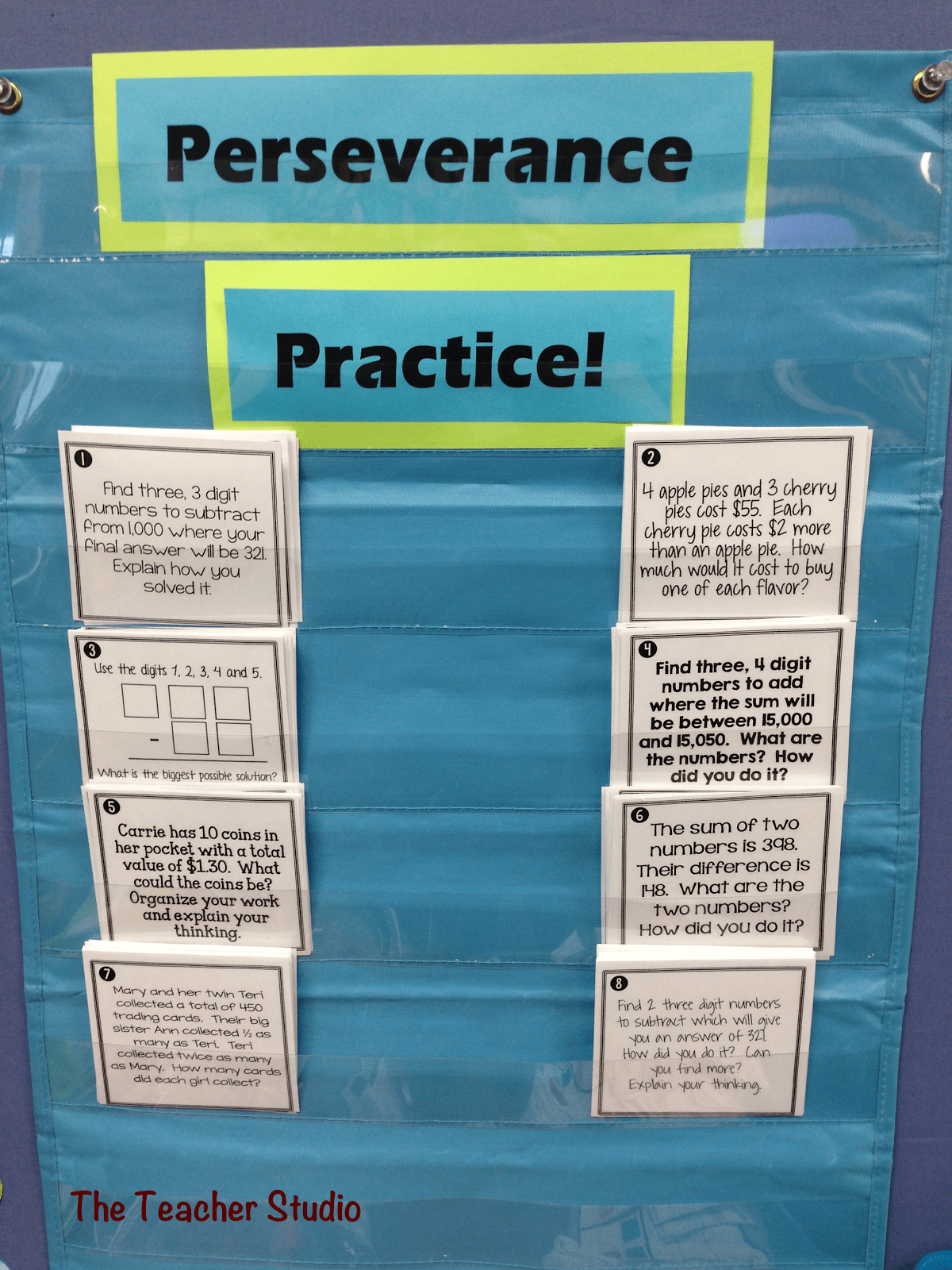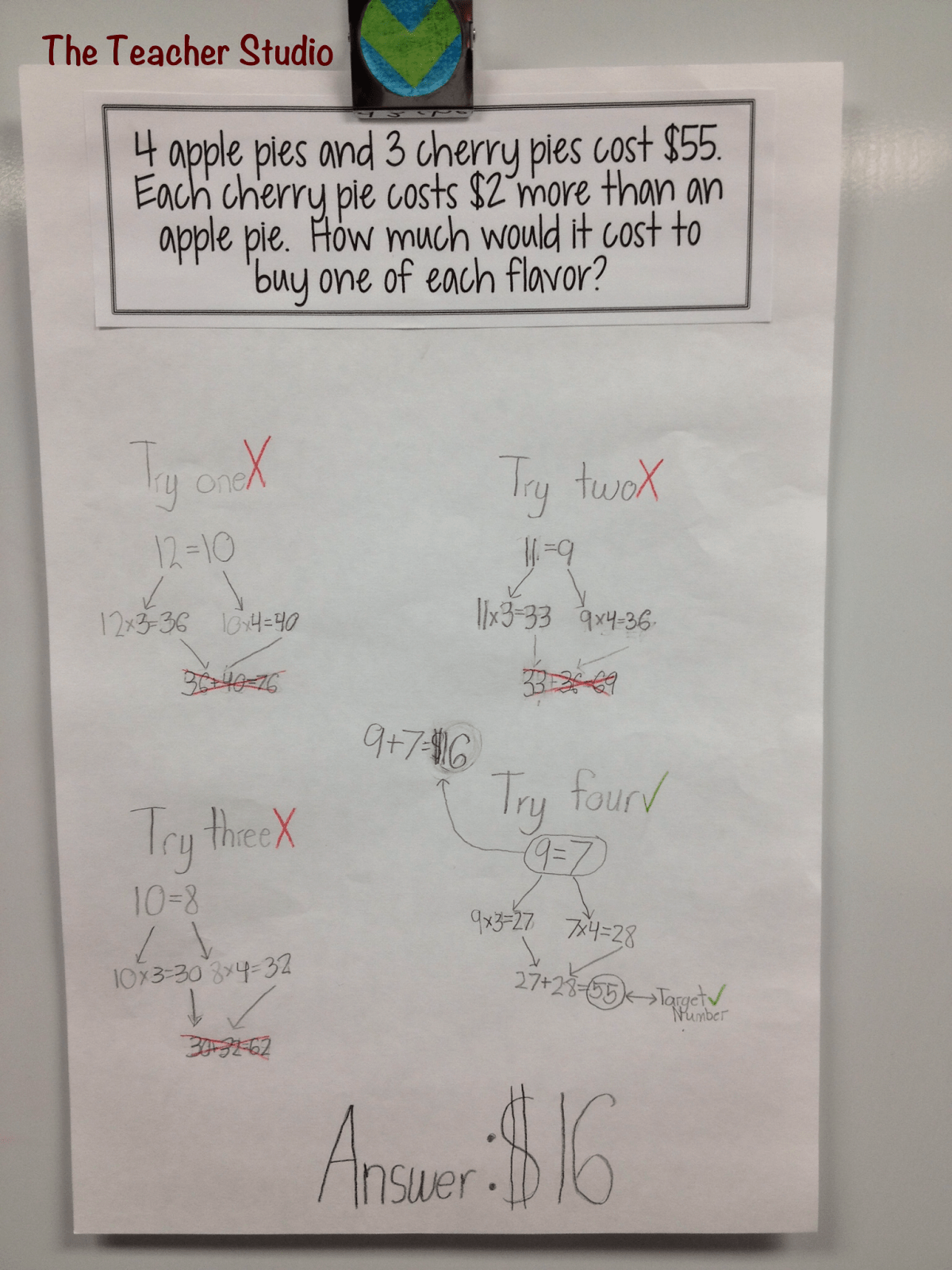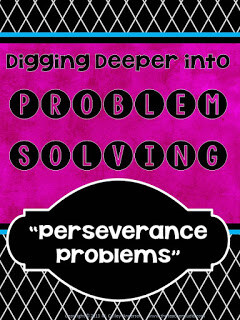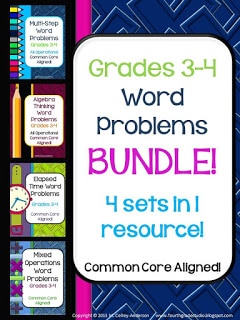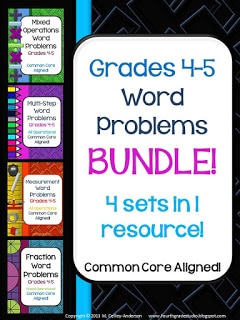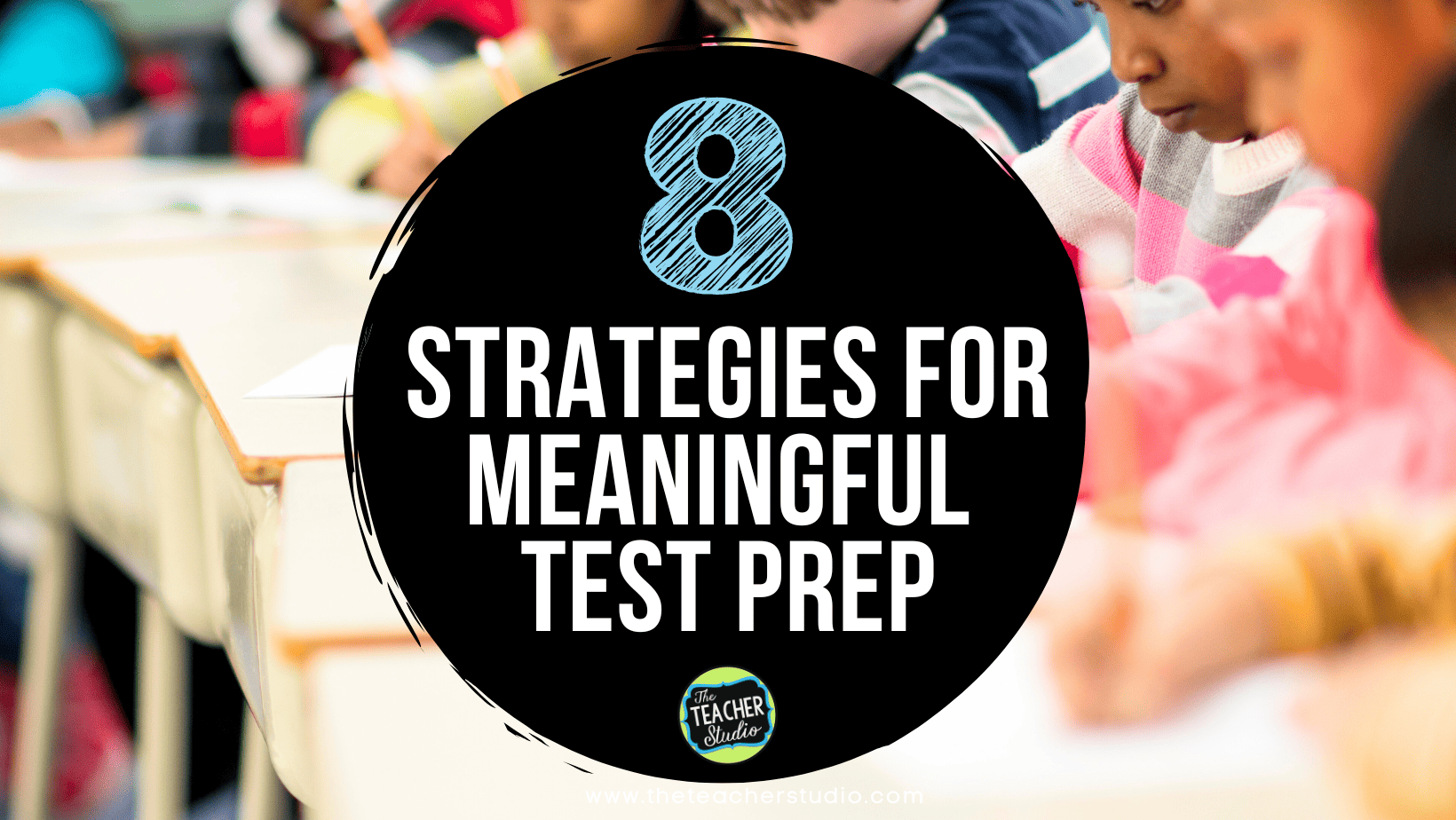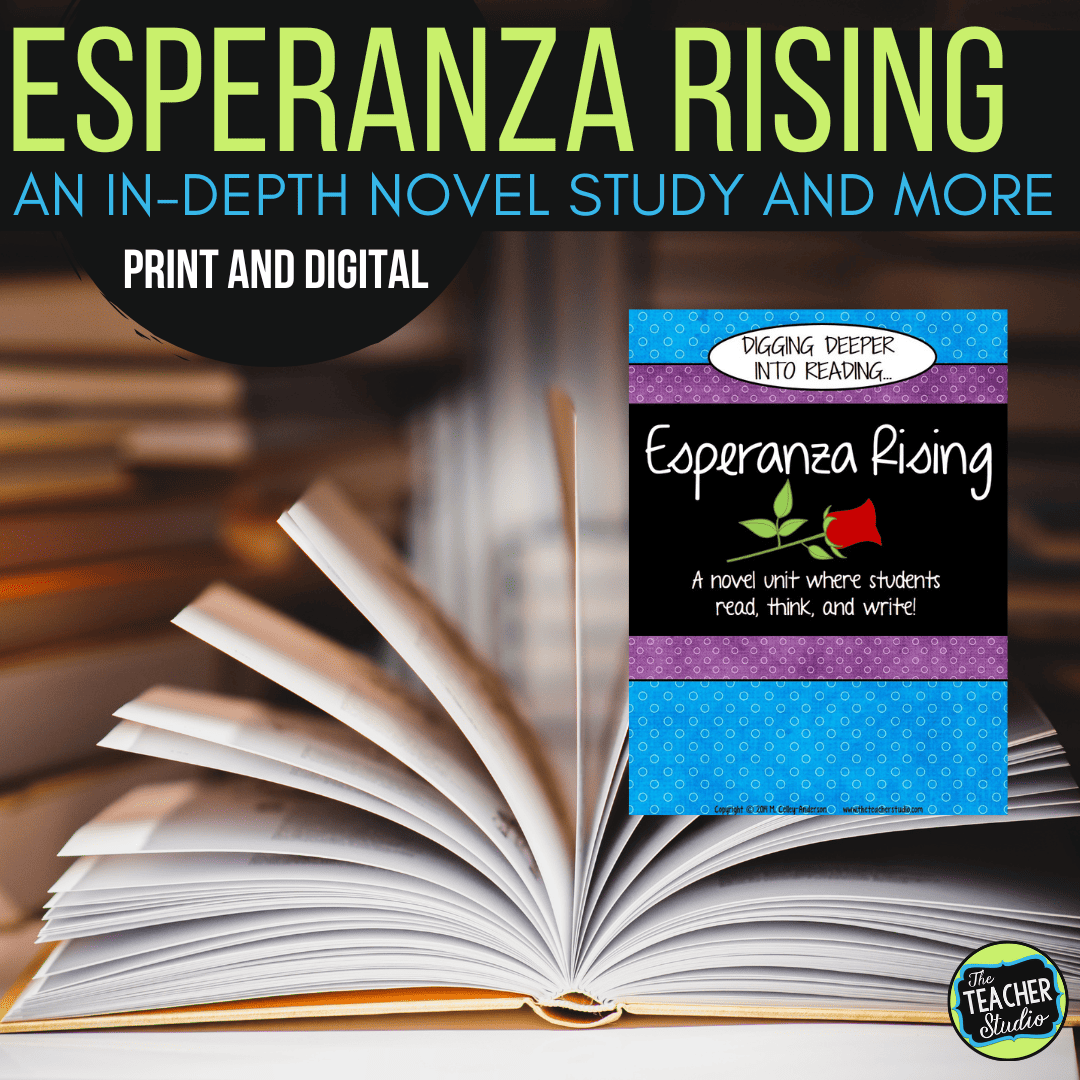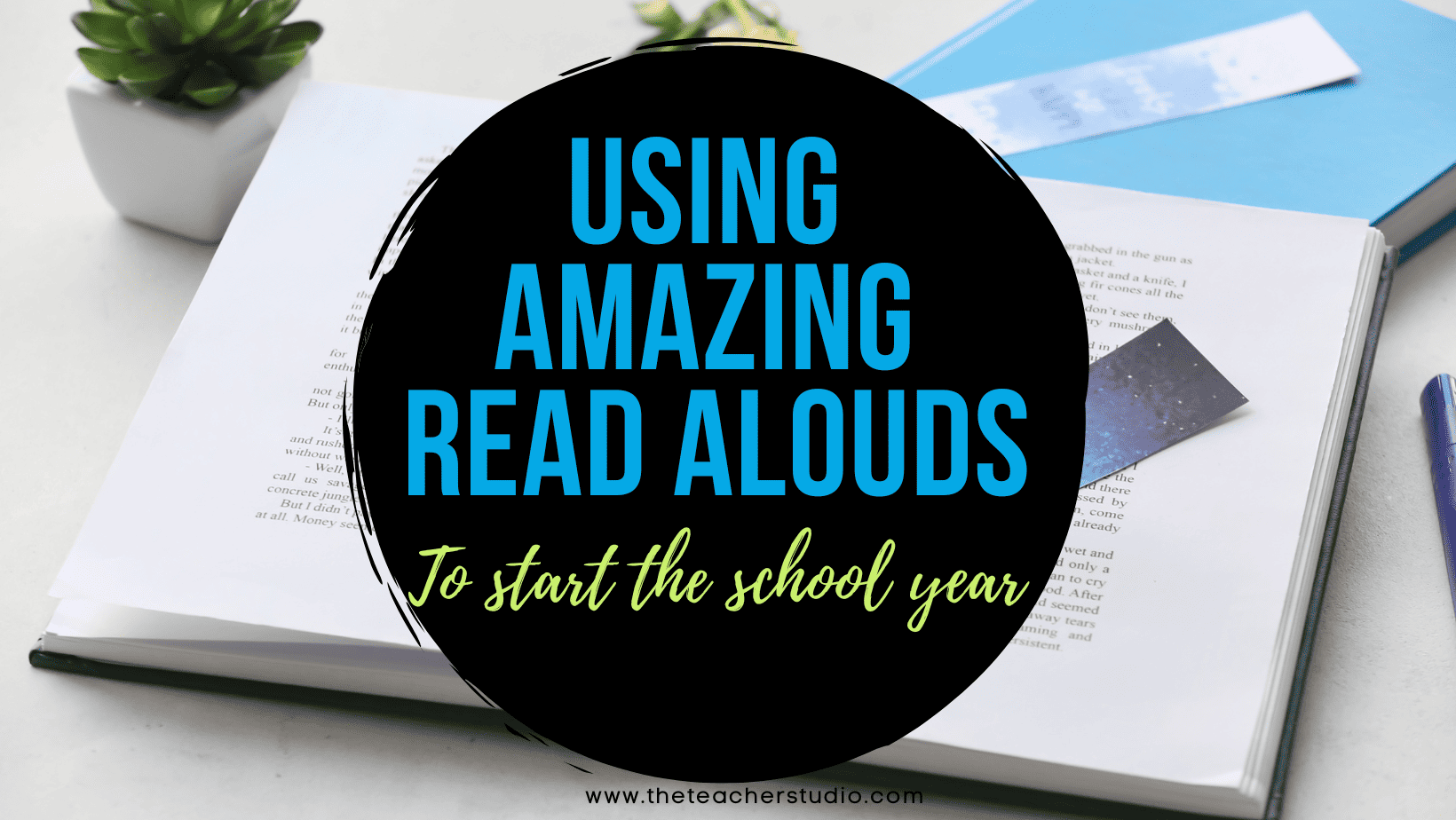1. Daily warm ups…I LOVE to use a word problem to start off class. Sometimes I have the students work alone…sometimes together…and then we share what we got, how we did it, and so on. Whether you do a gallery walk where students look at each other’s work, project samples using a document camera, or just have students explain their thinking–warming up with a problem is a great way to get a math class started–and a great way to review previously taught concepts as well! Students love working together…and the mathematical discourse generated is priceless!
2. Centers…often I find that teaching in smaller groups makes EVERYTHING better–for the students and for me. If I divide my class in half or in thirds, I often make word problems an activity they do when NOT with me. Sometimes they work alone and sometimes they work together–but it gives them meaningful work to do while waiting for their instructional group. These problems can be the same for all students or can be differentiated.
3. Partner problem solving…this is absolutely one of my favorite ways to incorporate problem solving. The discussion that happens between students is SO valuable and they can be taught how to “coach” each other without doing the work for each other! Also, students get SO good at finding errors in thinking and learning how to “give and take”. We do a LOT of partner problem solving!
4. Task cards…putting word problems on task cards lets you use problems in lots of ways–as centers, for fast finishers, and so on. The best part? You can differentiate by having different groups of students work at different levels or on different skills. Students love the satisfaction of completing a card–it seems much less daunting than a page full of problems!
5. Math journals/fast finishers…I ALWAYS have word problems displayed in places around the room for students who finish working early to use. This is one of the “I’m done–now what?” things that I train them on early in the year! I try to make these problems engaging, seasonal, related to a subject we are studying, or just interesting–that way students actually choose them! I either put them in little baskets in my math area or use these nifty pocket charts from my favorite “Dollar Spot”!
6. Learning posters…I’ve blogged about this before, but I love having students show their best work b making learning posters to display of problems they have solved. When they solve a problem in an unusual way, or use a super efficient strategy, or organize their work particularly well–I may ask them to (or they may ask to!) create a learning poster of the problem. This showcases their best work and lets them share with others their awesomeness! I simply give them a 12 x 18 paper and they work to take their solution, reorganize it, label it, etc and then I display the posters for a while. Sometimes the students will actually share them with a small group or the class if there is a good teaching point. (This poster has the problem glued at the top because it was one of my perseverance problems and I included big problems in the resource for just this purpose.)

